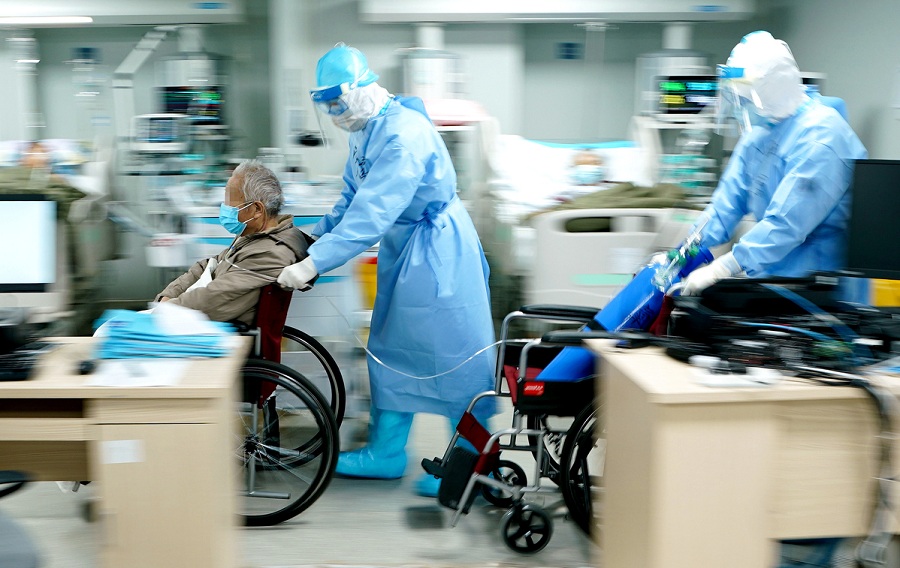Rapid action taken in city pays dividends

Doctors accompany an 81-year-old patient to a CT scan at Huoshenshan Hospital. WANG YUGUO/XINHUA
Higher standards
The two hospitals were built to higher technical standards, as they house the biggest intensive care units in Wuhan and are equipped with intelligent medical systems. Doctors from Beijing, Shanghai and Guangzhou, capital of Guangdong province, provided remote computerized tomography, or CT, consultations to help patients at both facilities, Chen said.
On Feb 2, medical personnel from the People's Liberation Army took over Huoshenshan Hospital after it was completed, and six days later, medical workers from Zhongnan Hospital of Wuhan University took over Leishenshan Hospital.
Drawing on Xiaotangshan Hospital's experience, the two facilities were equipped with segregated quarantine wards to minimize the risk of cross-infection. Medics at both hospitals followed a strict protocol for sterilization and handling contaminated waste, to avoid infection.
Summarizing the experience of building the two makeshift hospitals so quickly, Chen said it was the nation's strong mobilization capability and "solidarity" among those involved that made it all possible.
"China's institutional advantages guaranteed that we would succeed in building the hospitals in such a short time, creating a miracle at such a trying moment," he said.
In addition to building specialized hospitals to provide more beds for infected patients, the central government mobilized medical workers nationwide to help Wuhan fight the virus.
More than 340 teams, comprising over 42,600 medical workers, rushed to the city in answer to a call made by the central government. The teams included at least 4,000 medical personnel from the PLA.
